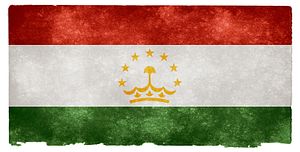Something violent happened along a dirt road near the Tajik-Uzbek border early in the morning of November 6. The bulk of the information available at present is government-provided.
What we know is that something happened in the southern part of Rudaki district, more than 60 kilometers from Dushanbe. Given the images provided by the government, depicting the wreckage of four cars and several burned bodies, there’s little doubt something violent happened. As RFE/RL noted, its correspondents were prevented from approaching the scene; it will take time for other journalists to attempt to do so.
At around 3:00 a.m., according to the Tajik State Committee for National Security and as reported by RFE/RL and Eurasianet, a group of militants attacked a border post along the Tajik-Uzbek border. Of the 20 attackers, 15 were killed and four or five were captured. Two state personnel — reportedly a border guard and a police officer — were also killed. The Ministry of Internal Affairs mentions five firearms (AKMs, a variant of the AK-47) being seized during the attack. According to the government and state media, the attackers crossed into Tajikistan’s southern Qabodiyon district from Afghanistan on November 3.
Tajik authorities claim that the attackers are members of the Islamic State (IS). IS has not yet commented.
There are more questions than answers at this point. It’s unclear at what stage the attackers acquired arms, before or during the attack — only five firearms are mentioned by government sources. It also seems colossally stupid for unarmed or under-armed attackers to take on a border guard post; the casualty ratio suggests as much. One also has to wonder where they acquired four cars after crossing from Afghanistan. Judging from the license plates visible in the photos provided by the state, they were driving Tajikistan-registered cars. Between the November 3 crossing and the November 6 ending, what were these people doing? How did the authorities miss 20 IS militants riding in a caravan of cars through southern Tajikistan, surely passing by other border posts without incident? If they were IS members, what was their aim? And if they were not IS militants, who were they?
Tajikistan certainly faces security risks, IS among them.
Recently, the U.S. State Department published its annual Country Reports on Terrorism for 2018. The Tajikistan section cites four “terrorist incidents” in Tajikistan: The July 29 killing of four foreign cyclists; the killing of two Tajik forestry workers on August 26 followed by a retaliatory airstrike on the Afghan side of the border by either Tajik or Russian military assets, denied by both; the November 4 arrest of 12 people suspected of plotting a bombing of the Russian 201st motorized rifle division headquarters in Dushanbe; and the November 7 prison riot in Khujand, claimed by IS.
But the Tajik government also has a history of inflating and conflating threats — most often automatically pegging the banned opposition with responsibility — making it difficult to take its assessments at full face-value. The U.S. State Department report follows a sentence noting that IS claimed the attack on the cyclists, and that the attackers pledged allegiance to IS in a video posted online, with this: “The government, however, believed that the opposition political party, the Islamic Renaissance Party of Tajikistan (IRPT), was responsible for the attack.”
The report also cites critics as arguing that Tajik law “gives the government indefinite latitude in determining what constitutes ‘extremism,’ noting that the Tajik government continues to unilaterally designate political opposition groups such as the IRPT, or religious affiliations, such as Salafi Muslims, as terrorist groups.”
Tajik President Emomali Rahmon is on an official trip to Europe through November 12. The November 6 incident coincided with Tajikistan’s Constitution Day.
































